Bubur Cha Cha or Bo Bo Cha Cha is a very popular sweet Peranakan Nonya dessert in South East Asia. Peranakan are the descendants from intermarriages between the early Chinese immigrants and the local Malay women in Malaysia. As well as in Singapore and Indonesia. Peranakan cuisine or Nonya cuisine is the fusion of Chinese and Malay cuisines. Likewise, Bubur means porridge in Malay language. Whereas Cha Cha is a type of dancing, so literally Bubur Cha Cha means dancing porridge.
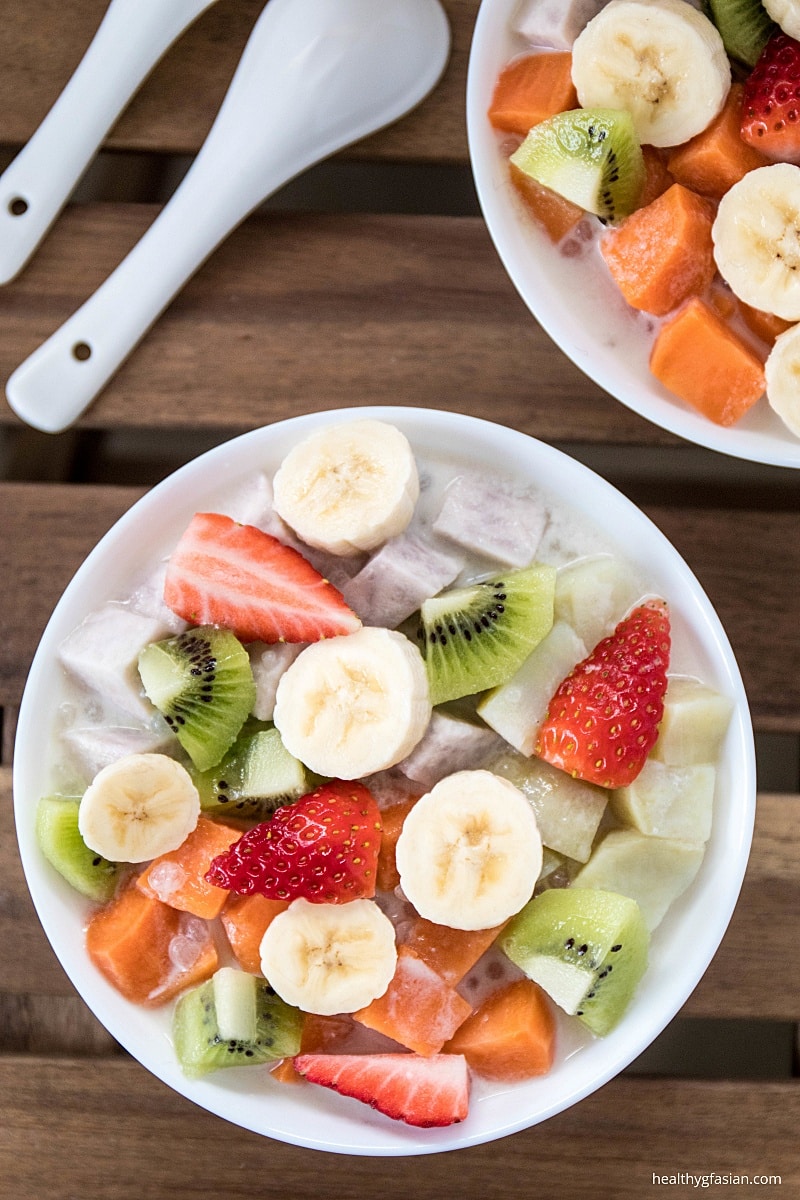
Ingredients for Bubur Cha Cha (Bo Bo Cha Cha)
I made this Bubur Cha Cha with main ingredients using different coloured sweet potatoes, taro (yam), sago pearls and bananas. Served in a sweet coconut milk soup flavoured with pandan (screwpine) leaves. Sometimes, they also add colourful tapioca jelly and black eye peas. When I combine all the ingredients, Bubur Cha Cha is a very colourful and delicious sweet dessert. This bubur cha cha dessert is not only super easy to prepare. You can also serve it either hot or cold. This dessert is delightful and warming when served hot during the colder seasons. And refreshing when served cold during the hotter seasons of the year.
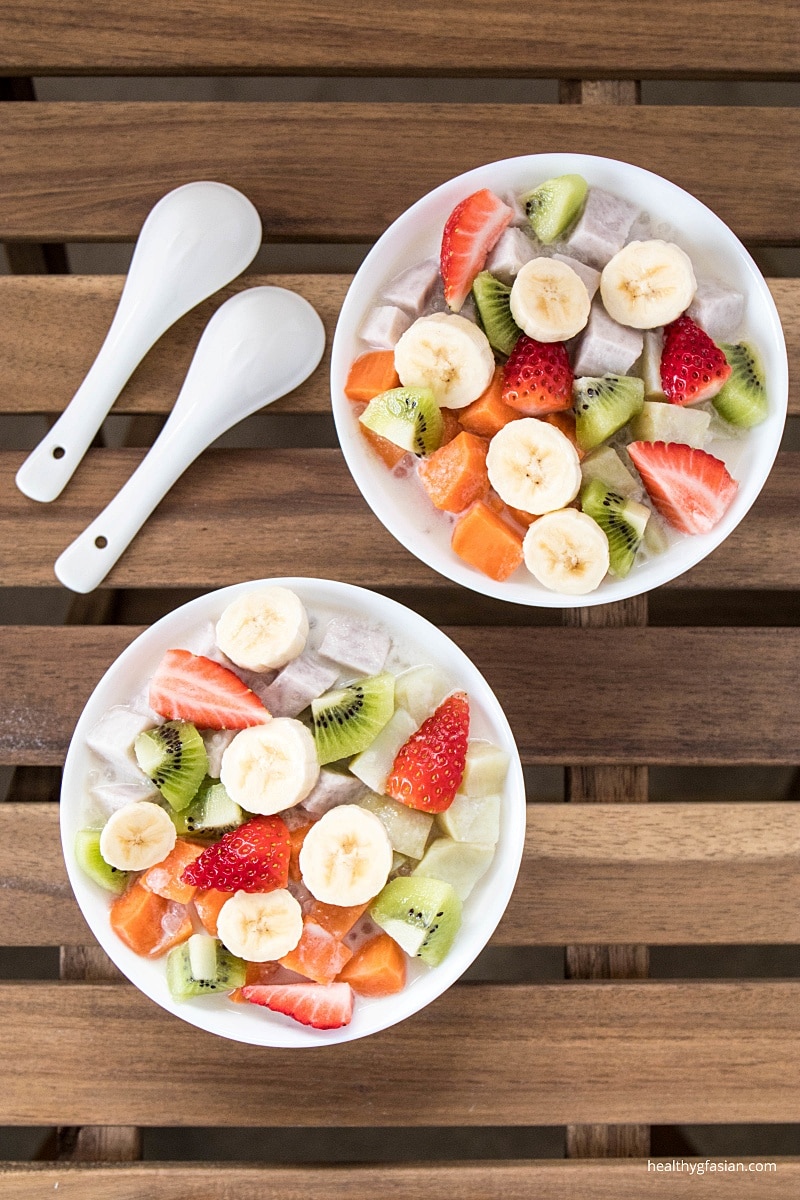
Gluten Free Bubur Cha Cha (Bo Bo Cha Cha)
For my gluten free Bubur Cha Cha recipe, I am using red sweet potatoes (orange flesh). As well as purple sweet potatoes (yellow flesh) and taro (yam) (white flesh with purple dots and stripes). Plus tapioca pearls (sago) served in a coconut milk soup flavoured with pandan (screwpine) leaves and sweetened with agave sugar. Then garnished with some bananas, kiwifruits and strawberries and served either hot or cold. This gluten free bubur cha cha recipe is also vegan, dairy free, soy free and nut free. Plus egg free and refined sugar free.
You may also like my other gluten free Malaysian desserts recipes:
- Berries Kuih Sago (Tapioca pearls cake);
- Tapioca Cake;
- Steamed Sweet Corn Cake (Jagung Kuih);
- Pumpkin and Coconut Layered Cake (Kuih Talam); and
- Sweet Potato Glutinous Rice Balls (Ondeh Ondeh/Onde Onde).
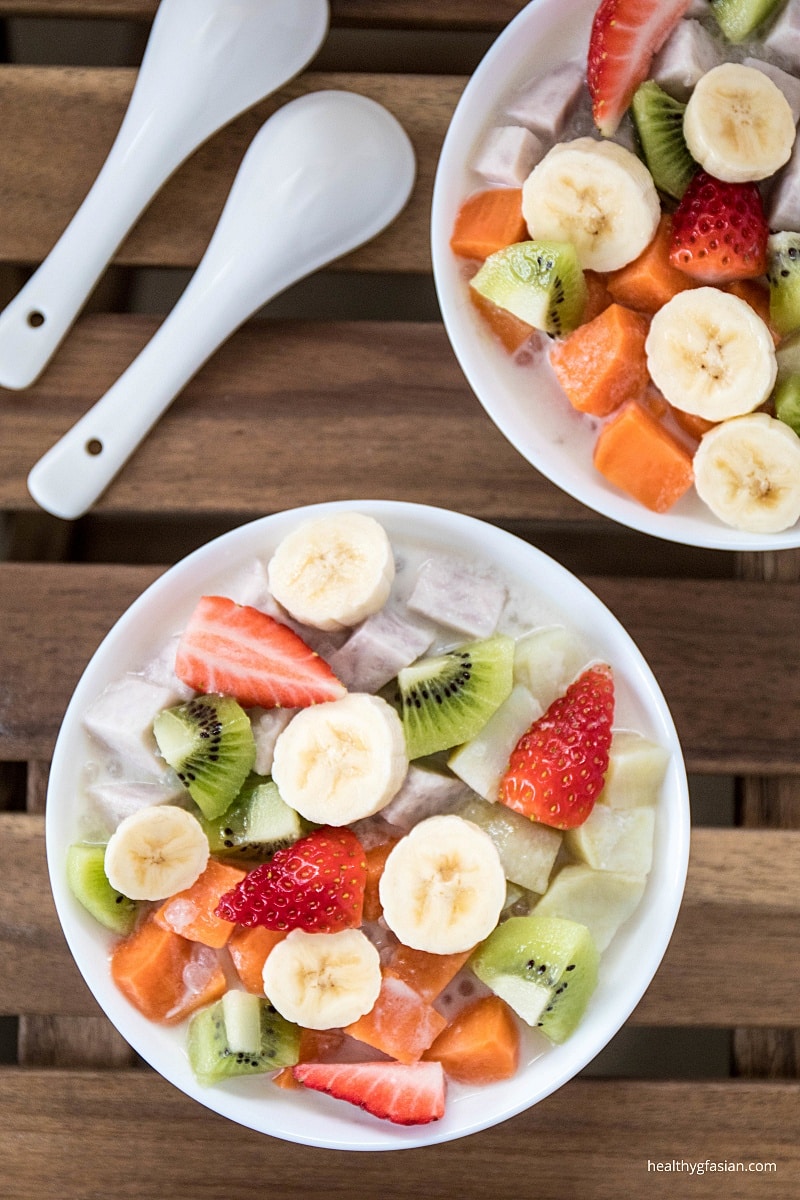
About Sweet Potatoes
Sweet potatoes (Ipomoea batatas) are big, starchy and sweet savouring tuberous roots that are a root vegetable. They are native to the tropical regions of Central and South Americas. These edible roots are long and elongated, with smooth skin varying from red, brown, beige and purple in colours. While their flesh varieties include white, beige, yellow, orange and purple. The darker coloured flesh are sweeter and more moist than the lighter or pale coloured flesh. Select sweet potatoes that are firm without any visible cracks, bruises or soft spots. Likewise, one of the oldest grown vegetables in history are sweet potatoes. Farmers cultivated them as far back as 5,000 years ago in Central and South Americas. They discovered prehistoric sweet potato relics in Peruvian caves as far back as 10,000 years ago.
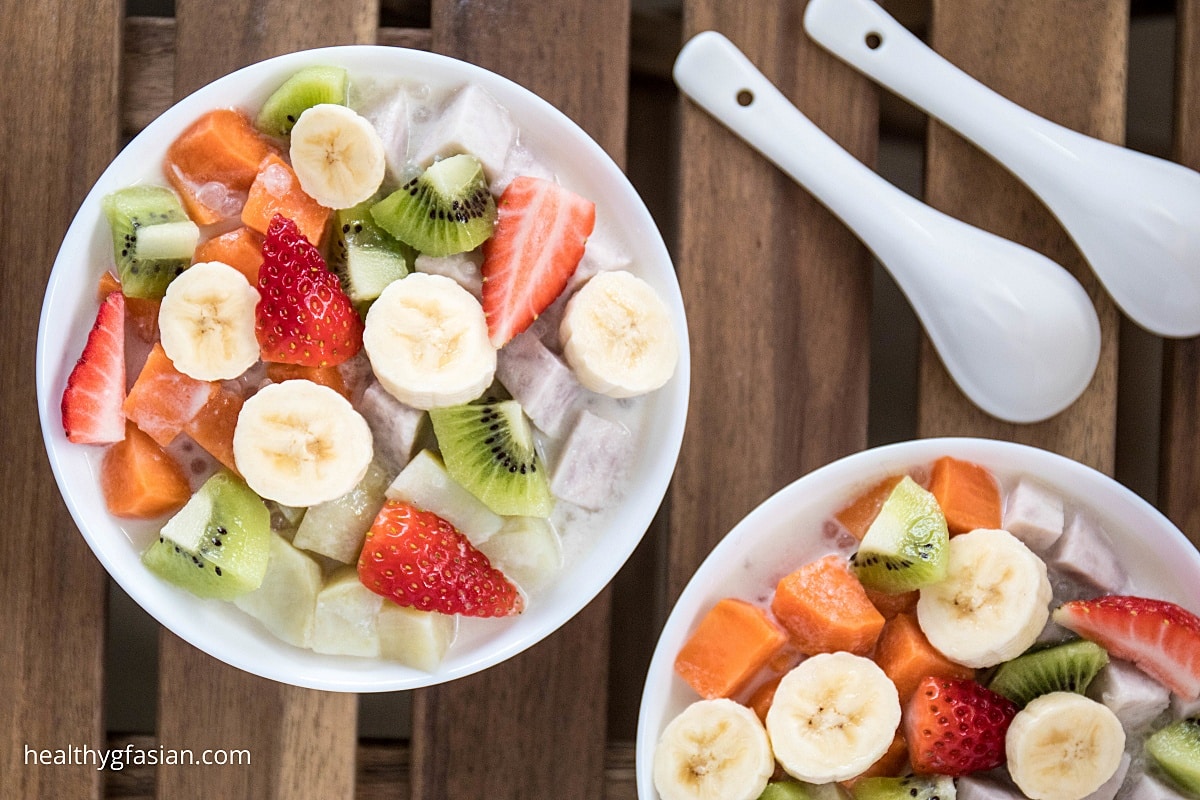
Nutritional Values of Sweet Potatoes
Sweet potatoes are not only economical to buy, they are nutrients rich and extremely versatile to cook. Besides, sweet potatoes are a nutritional powerhouse. Because they have many essential vitamins and minerals. Sweet potatoes are an excellent source of essential vitamins and minerals. Including vitamin A (4 times the daily requirement), vitamin B5 (pantothenic acid) and vitamin B6 (pyridoxine). Plus vitamin C and vitamin H (Biotin). As well as manganese, copper and potassium. They are also a good source of phosphorus, vitamin B1 (Thiamine), vitamin B2 (riboflavin) and vitamin B3 (Niacin).
Furthermore, sweet potatoes have no saturated fats. Besides they are cholesterol free, low in sodium and are a rich source of dietary fiber as well. In addition, they are high in carotenoids like beta carotene and other carotenoids. Even though sweet potatoes have more natural sugars than potatoes. Likewise, they have more complete nutrients and fewer calories with lower glycemic index than the regular potatoes. There are numerous health benefits of sweet potatoes with the increase in the intake of plant based foods.
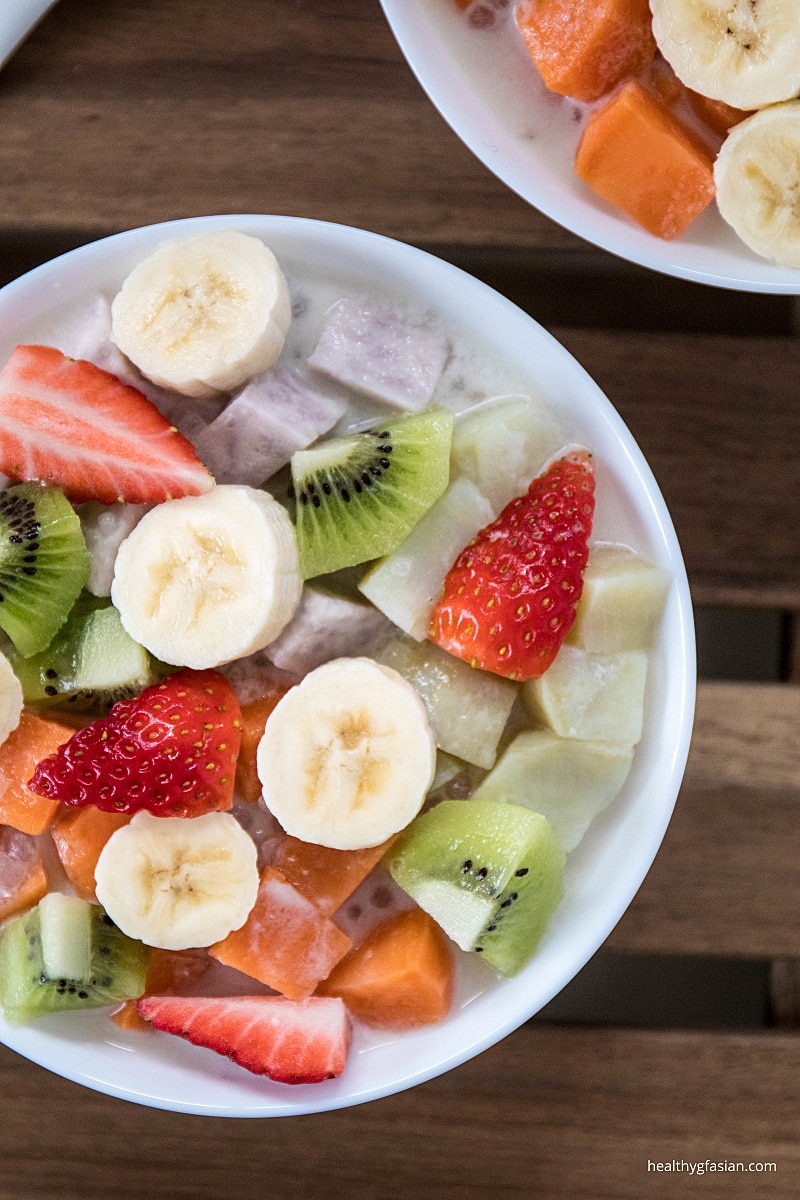
Health Benefits of Sweet Potatoes
The overall health benefits of sweet potato may include:
- Reduce risks of heart disease, diabetes, obesity, cancer and premature aging;
- Improvements in eye sights;
- Boost the body’s immunity;
- Promote fertility; and
- Support healthy skin and digestive systems.

Ingredients
- 300 g red sweet potato (orange flesh), peeled and cut into 2cm cubes
- 300 g purple sweet potato (yellow flesh), peeled and cut into 2cm cubes
- 300 g taro (yam) fresh or frozen, peeled and cut into 2cm cubes
- 50 g tapioca pearls (sago)
For the coconut milk soup base:
- 10 pandan leaves screwpine leaves, tie into a knot
- ¼ cup agave syrup
- 400 ml coconut milk
- 4 cups water
- ¼ teaspoon salt
For Garnish:
- ¾ cup bananas peeled and sliced
- ¾ cup kiwifruits peeled and diced into roughly 2 cm pieces
- ¾ cup strawberries sliced into quarters
Instructions
- Heat up a wok with 1/3 full of water and place a large plate onto a steaming rack and bring to a rolling boil. Then put all the cut sweet potato and taro onto the plate and steam for ten minutes or until just cooked on low to medium heat. Do not over steam.
- Fill a small pot half full of water, add in the tapioca pearls (sago) and bring to a boil. Once its boiling, simmer on low to medium heat until tapioca pearls (sago) are translucent (no more white spots). Stir frequently to ensure its not sticking at the base. Drain and set aside in a medium bowl with some water to prevent them from sticking together.
- In another large stock pot, combine all the ingredients for the coconut milk soup base, bring to a boil. Then cover with lid and simmer on low for 15 minutes.
- Drain the tapioca pearls (sago) and add them into the coconut milk soup base.
- Then add all the cooked sweet potatoes and taro into the coconut milk soup base. Mix and combine well gently. Bring to a boil and turn off the heat.
- Garnish with some bananas, kiwifruits and strawberries.
- Serve immediately hot or if serving cold, chill in the refrigerator until cold before serving.
Recommended Products
Notes
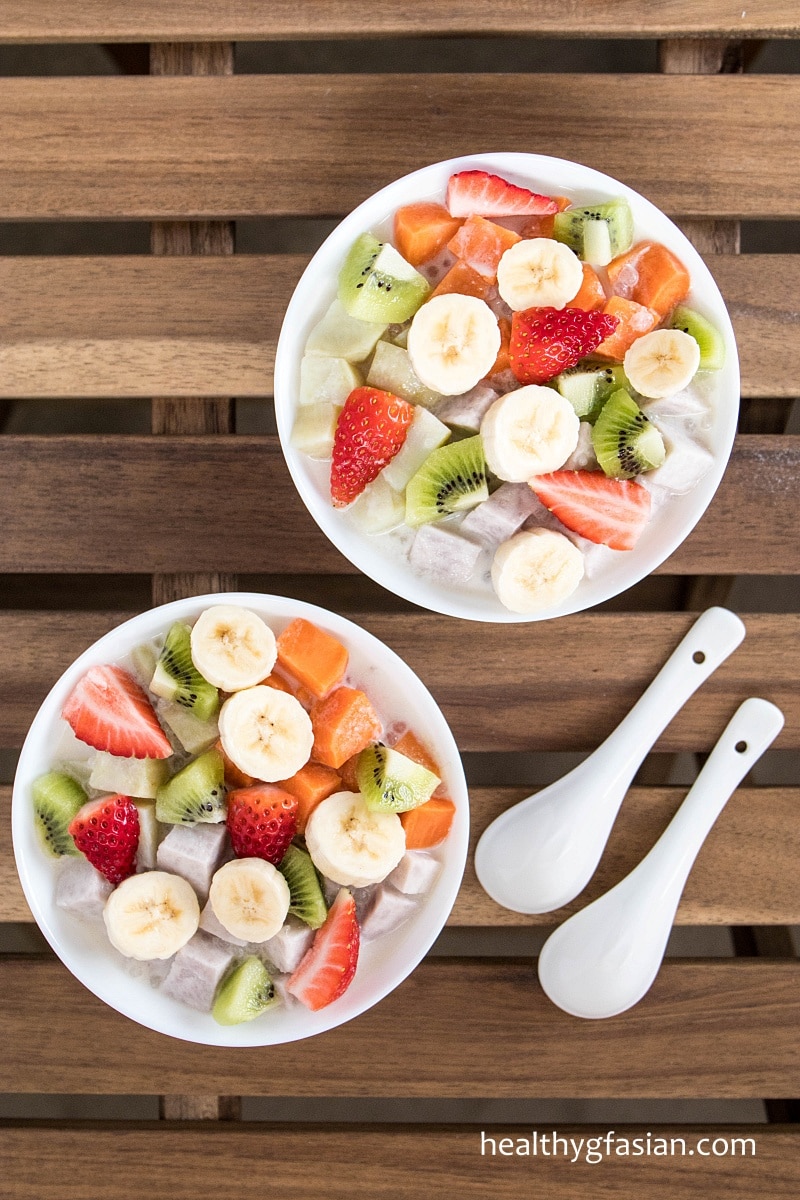


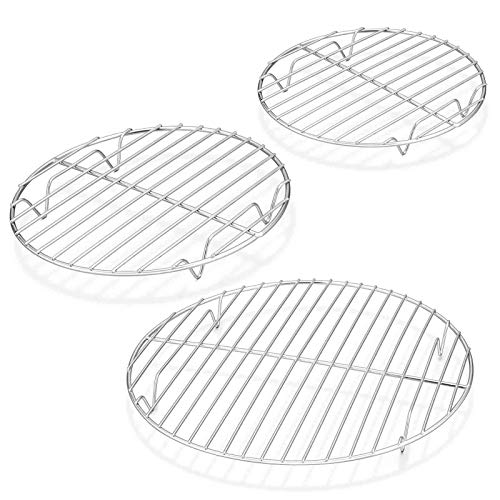


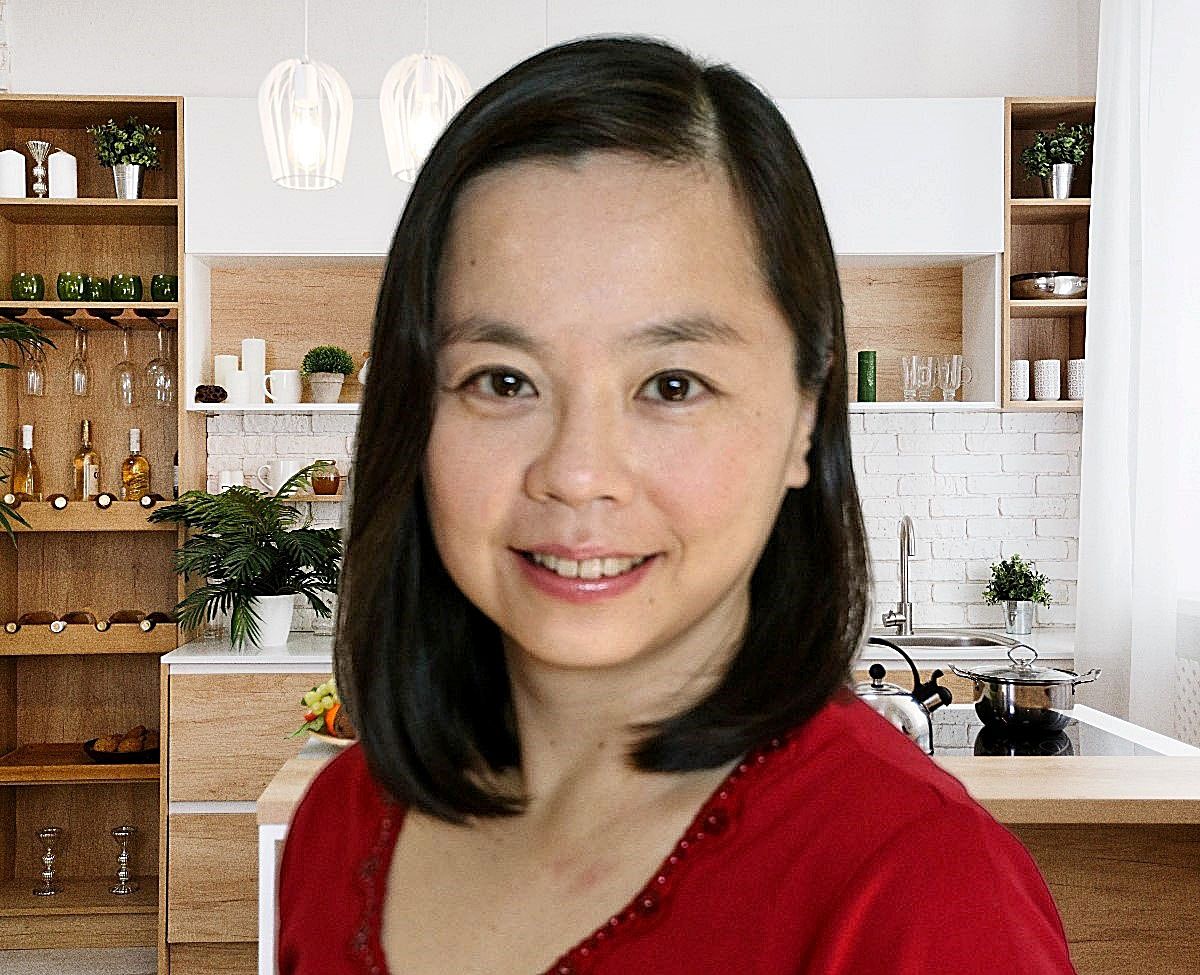
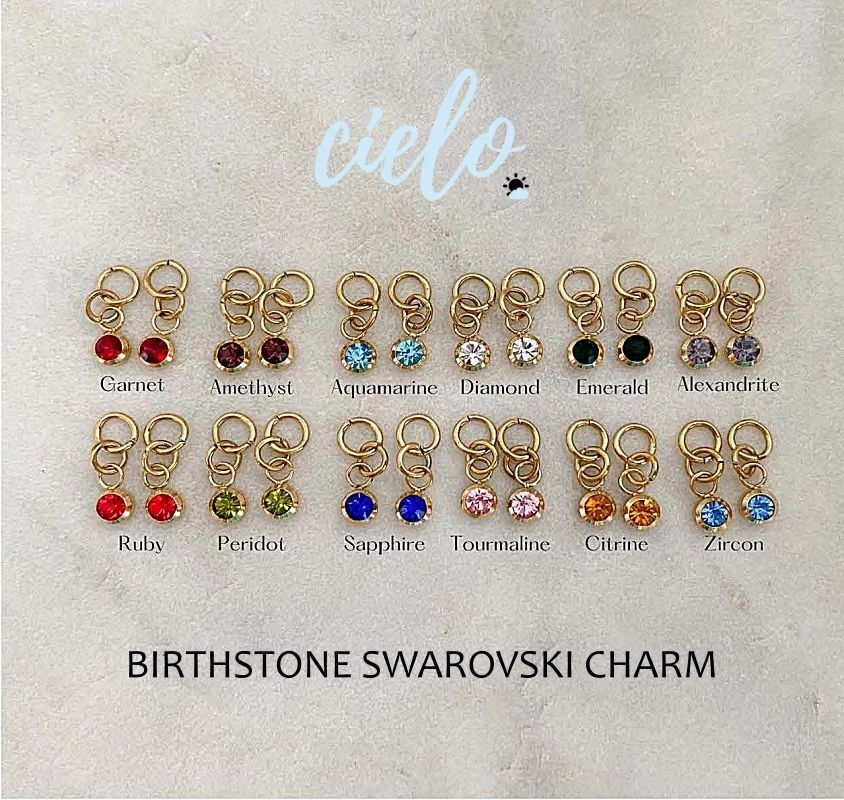

This is really interesting and unique. I love all of the vibrant fresh fruit on top.
This is indeed an unusual Malaysian dish. It is very well-loved in South East Asia. Thanks for visiting. 🙂
Always very interesting to meet Asian dishes, the recipes are usually original and unlike anything! It is a pity that many ingredients not available to me 🙂
Asian cuisines are really quite unique and tasty. Thanks for stopping by. ☺